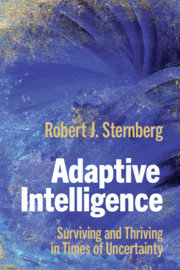Refine search
Actions for selected content:
15 results
The bilingual advantage: it's how you measure it
-
- Journal:
- Journal of Demographic Economics , First View
- Published online by Cambridge University Press:
- 21 March 2025, pp. 1-20
-
- Article
- Export citation
If you could read my mind–an experimental beauty-contest game with children
-
- Journal:
- Experimental Economics / Volume 25 / Issue 1 / February 2022
- Published online by Cambridge University Press:
- 14 March 2025, pp. 229-253
-
- Article
-
- You have access
- Open access
- HTML
- Export citation
Identifying bilingual reference profiles: a cluster-analysis approach to reference production among Greek–Italian bilingual children
-
- Journal:
- Language and Cognition / Volume 16 / Issue 4 / December 2024
- Published online by Cambridge University Press:
- 16 October 2024, pp. 2081-2104
-
- Article
-
- You have access
- Open access
- HTML
- Export citation
11 - Irony and Thought: Developmental Insights
- from Part IV - Irony in Linguistic Communication
-
-
- Book:
- The Cambridge Handbook of Irony and Thought
- Published online:
- 20 December 2023
- Print publication:
- 07 December 2023, pp 181-196
-
- Chapter
- Export citation

Parental Investments and Children's Human Capital in Low-to-Middle-Income Countries
-
- Published online:
- 10 November 2022
- Print publication:
- 01 December 2022
-
- Element
-
- You have access
- Open access
- HTML
- Export citation
Cognitive skills and intra-household allocation of schooling: do parents reinforce or correct for cognitive differences between siblings?
-
- Journal:
- Journal of Demographic Economics / Volume 90 / Issue 2 / June 2024
- Published online by Cambridge University Press:
- 03 October 2022, pp. 202-228
-
- Article
- Export citation
4 - Cognitive Issues in Reading
- from Part I - Foundations of Reading
-
- Book:
- Reading in a Second Language
- Published online:
- 01 September 2022
- Print publication:
- 08 September 2022, pp 84-109
-
- Chapter
- Export citation
10 - Creating Equitable Opportunities for Language and Literacy Development in Childhood and Adolescence
- from Part One - Factors Influencing Language Development
-
-
- Book:
- Language Development
- Published online:
- 11 August 2022
- Print publication:
- 25 August 2022, pp 231-256
-
- Chapter
- Export citation
5 - The Role of Education
-
- Book:
- Catching Up to America
- Published online:
- 27 August 2021
- Print publication:
- 09 September 2021, pp 106-133
-
- Chapter
- Export citation

Adaptive Intelligence
- Surviving and Thriving in Times of Uncertainty
-
- Published online:
- 21 January 2021
- Print publication:
- 04 February 2021
Orientation and verbal fluency in the English Longitudinal Study of Ageing: modifiable risk factors for falls?
-
- Journal:
- International Psychogeriatrics / Volume 31 / Issue 10 / October 2019
- Published online by Cambridge University Press:
- 07 December 2018, pp. 1491-1498
-
- Article
- Export citation
The same or different: An investigation of cognitive and metalinguistic correlates of Chinese word reading for native and non-native Chinese speaking children
-
- Journal:
- Bilingualism: Language and Cognition / Volume 21 / Issue 4 / August 2018
- Published online by Cambridge University Press:
- 30 June 2015, pp. 765-781
-
- Article
- Export citation
Chapter 16 - Evidence-Based Reading Interventions
- from Part IV - Successful Implementation of Specific Programmes and Interventions:
-
-
- Book:
- Handbook of Implementation Science for Psychology in Education
- Published online:
- 05 November 2012
- Print publication:
- 20 August 2012, pp 277-297
-
- Chapter
- Export citation
A multi-site randomized controlled trial of a cognitive skills programme for male mentally disordered offenders: social–cognitive outcomes
-
- Journal:
- Psychological Medicine / Volume 42 / Issue 3 / March 2012
- Published online by Cambridge University Press:
- 16 August 2011, pp. 557-569
-
- Article
- Export citation
7 - Conduct disorder in context
-
-
- Book:
- Conduct Disorders in Childhood and Adolescence
- Published online:
- 11 August 2009
- Print publication:
- 23 November 2000, pp 169-201
-
- Chapter
- Export citation
